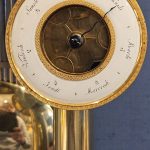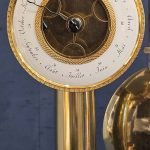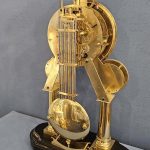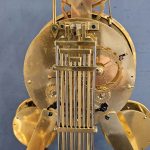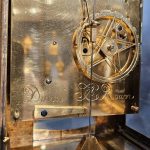A skeleton clock by Hubert Sarton
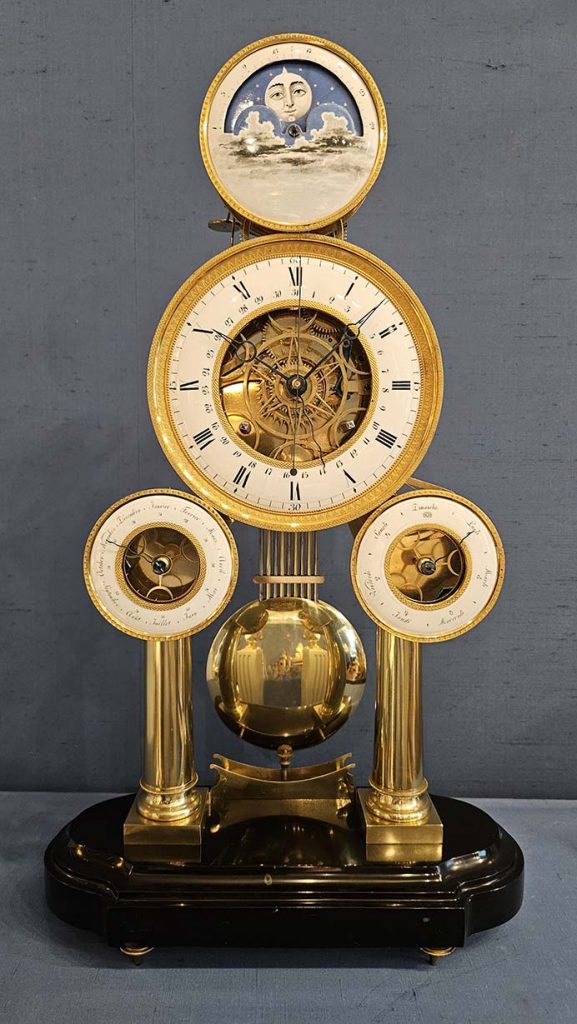
Pendule ancienne
An early 19th Century gilt bronze, brass and black marble four-dial skeleton clock by Hubert Sarton – circa 1812-1815
Hubert Sarton (1748-1828)
Hubert Sarton was clockmaker to Duke Charles-Alexander of Lorraine, Governor General of the Austrian Netherlands, and worked for many years in the service of the Prince-Bishop of Liège, François-Charles de Velbrück, who was his patron and supporter.
Height: 52 cm. (20 ½ in.) Width: 30.5 cm. (12 in.) Depth: 12.5 cm. (5 in.)
The central dial with Roman numerals indicating the hours and Arabic numerals for the quarter-hours and the date, with pierced blued steel hands. The circular movement has a pin escapement and knife suspension of the balance grill and strikes the hours and half-hours by means of a count wheel mounted on the back-plate.
The upper dial indicates the phases and ages of the moon.
The central dial indicates the hours, minutes, seconds and date.
The lower right dial with a hand indicating the days of the week, and under each day the symbol of the corresponding planet.
The lower left dial with a hand indicating the months of the year and under each month, the date of the last day of the month ending in 28, 30 or 31.
Comparative Literature
Two identical clocks formerly in the collections of the Nederlands Goud-, Zilver- en Klokkenmuseum in Schoonhoven are illustrated in D. Roberts, Continental and American Skeleton Clocks, West Chester (PA), 1989, chapter 4 (Belgian), pp. 170-183, figs. 172a et 173a.
« Hubert Sarton de Liège » Un Maître Horloger Belge, par Edward G. Aghib, B. Sc., I. Eng. ANCAHA bulletin N°12 mai 1974 pages 3 à 21
Some particularities for this clock by Hubert Sarton, compared to French clocks:
– The balance wheel has a very large amplitude, the central second hand oscillates quickly, it makes two complete turns of the dial to indicate one minute. Normally a clock that beats the half second or the second, makes a single turn for 60 seconds.
– The ratchets of the movement and the striking mechanism are placed on the rear plate of the movement. They are frequently placed on the front plate, behind the dial.
– The escapement wheel is planted on both sides of its pins, while generally it is only on one side. The two steel pallets act independently on each side of the escapement wheel with pins.
– The striking gong is placed above the movement, while it is frequently placed at the back of the movement.



